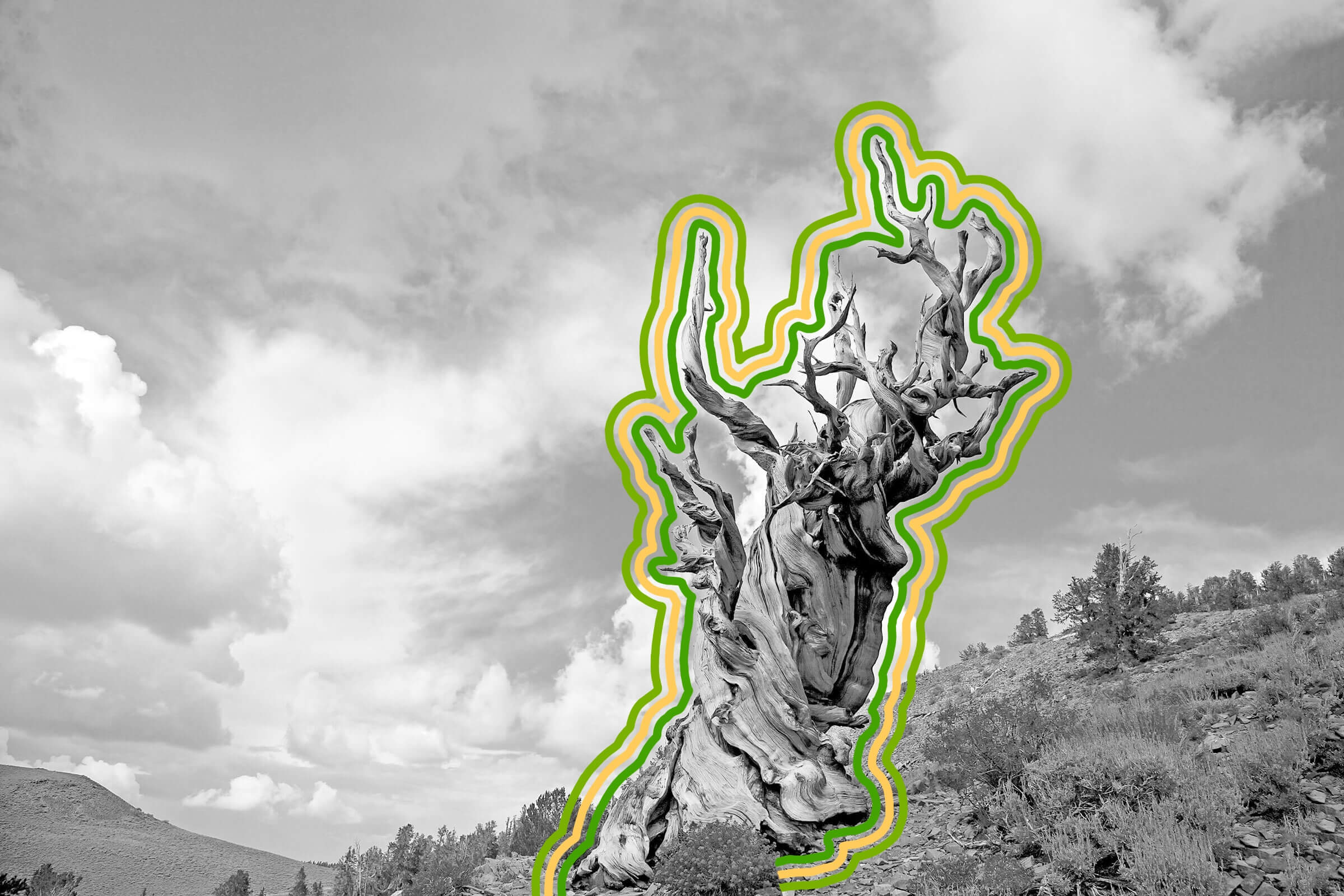

The average human life span has increased significantly over the last century, but we still don’t measure up to some of the longest-living plant and animal species on Earth. Sponges that sit at the bottom of the ocean for millennia, hardy trees that live where few other plants can survive, and centuries-old behemoths of the deep sea are just a few of these masters of longevity. Read on for more about six creatures that stretch the limits of life spans on Earth.
Greenland Shark

For decades, scientists suspected that Greenland sharks (Somniosus microcephalus) had long life spans based on their slow rate of growth, but evidence was lacking until a team of Danish researchers devised a new way to gauge their age in 2016. They realized that a protein in the sharks’ eyes formed at birth and didn’t degrade over time. The researchers carbon-dated the proteins, and found that the largest of the 28 sharks they studied, a 16-foot female, was likely between 272 and 512 years old — making Greenland sharks the longest-living vertebrates on Earth. Their hyper-extended lives may be due to their slow metabolism, which helps them survive the cold Arctic waters year-round. In fact, Greenland sharks may not even reach maturity until they’re over a century old.
Bowhead Whale

Bowhead whales (Balaena mysticetus), an Arctic species that can average 60 feet in length and weigh 60 tons, were hunted for centuries for their oil and baleen. Ironically, that practice has offered clues to their longevity. In the 1980s and ’90s, subsistence hunters in Alaska found, embedded in animals they harvested, old stone and metal harpoon points that were estimated to have been in use from the 1860s to 1890s and even earlier — indicating that the whales were at least a century old. The sequencing of the bowhead whale genome in 2015 revealed genetic mutations that might contribute to their resistance to cancer and life spans of 200 years or more, confirming Native Alaskans’ observations that the whales could “live two human lifetimes.” Most scientists agree that bowhead whales are the longest-living mammals on Earth.
Glass Sponge

These poetically named marine invertebrates don’t look much like your typical kitchen scrubber. Glass sponges have skeletons composed of geometric granules of silica that grow into elongated spears or vase-like shapes. A deep-sea glass sponge with the scientific name Monorhaphis chuni grows almost 10 feet long, forming the largest animal-made silicate structure on Earth, according to a 2012 study. And if that rather specific superlative isn’t impressive enough, M. chuni can live to be 11,000 years old, one of the oldest creatures on the planet. Scientists have analyzed M. chuni skeletons for clues about environmental conditions in the distant past, because — much like tree rings — the structures reveal the chemical signatures of their surroundings over time. Researchers are now using the data to build models of future climate changes.
Ocean Quahog

The thick shells of ocean quahogs, a type of clam, litter Atlantic beaches from North Carolina to Newfoundland — and beachcombers might not realize they’re stepping on one of Earth’s longest-living species. These edible bivalves (Arctica islandica) mature slowly, with their progress shown in growth ridges on their shells. By counting these ridges, scientists from Bangor University in Wales discovered that an ocean quahog they harvested from Icelandic waters in 2006 was 507 years old; they named it “Ming” after the Chinese dynasty that ruled at the time of its birth. Ming subsequently earned a Guinness World Record as the oldest non-colonial animal ever (meaning the creatures live alone and not in colonies, as glass sponges do).
Seychelles Giant Tortoise

He’s big, he’s slow, and he celebrated his 190th birthday in 2022. Jonathan the Seychelles giant tortoise has lived for more than a century at the governor’s residence on St. Helena, a small island in the South Atlantic, along with three other younger tortoises. Seychelles giant tortoises are thought to live well past 100 or even 200 years old, though their ages are difficult to pin down because they usually outlive the people studying them. Jonathan’s age was determined from an 1882 letter mentioning his arrival at St. Helena as a fully grown tortoise, suggesting that he was already at least 50 years old at that point. While Jonathan does hold the Guinness World Record as the oldest known land animal, his veterinarian told The Washington Post that fame doesn’t faze him: “While wars, famines, plagues, kings and queens, and even nations have come and gone, he has pottered on, totally oblivious to the passage of time.”
Bristlecone Pine

When it comes to longevity, ambulatory animals have nothing on plants. Several species of trees can live for a couple thousand years, but the oldest trees on Earth are Great Basin bristlecone pines (Pinus longaeva) — a rare species found only in arid, high elevation areas of California, Nevada, and Utah. Shaped by constant winds into twisted, gnarled silhouettes, bristlecone pines have been shown to survive for at least 4,000 years. In 1964, a geographer sampled a bristlecone pine nicknamed Prometheus and discovered 4,862 growth rings in its trunk before it was cut down, although the conditions in which the tree grew were so harsh it may actually have been about 4,900 years old (many trees typically form around a ring a year). The oldest living specimen is a tree dubbed Methuselah in California’s Inyo National Forest, estimated to be about 5,000 years old. To protect it from human-caused damage, there are no signs marking its location.
